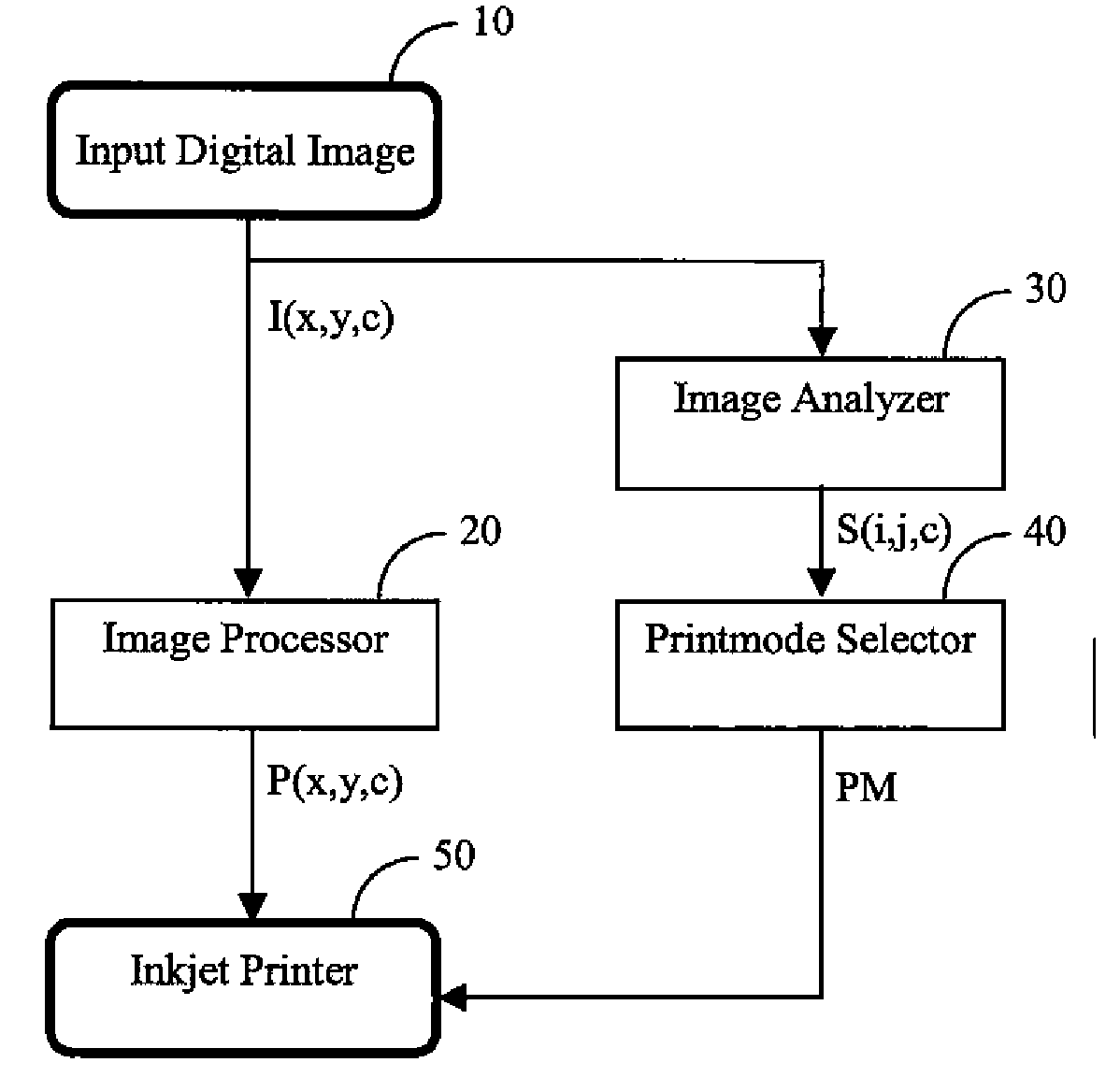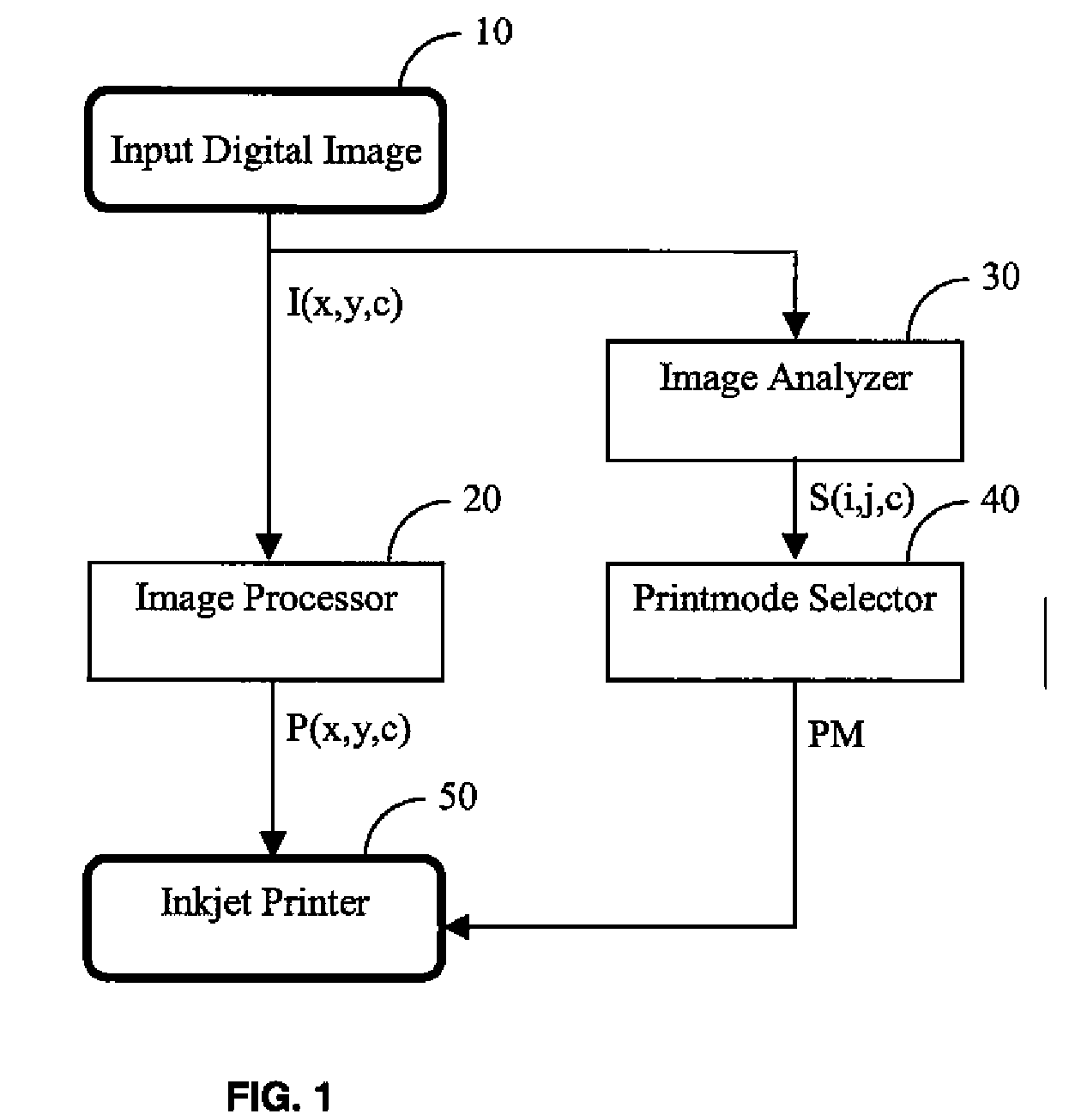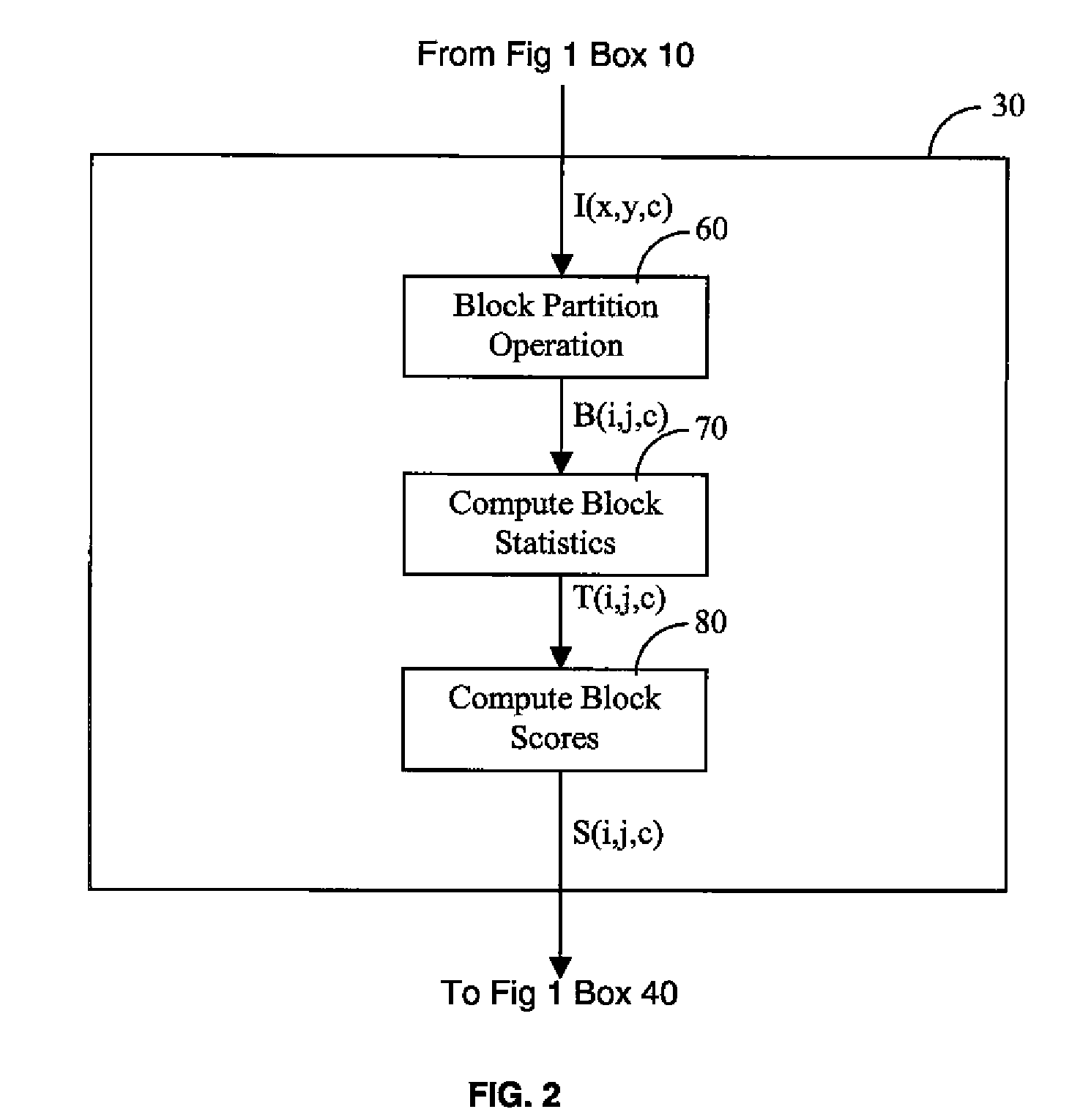Inkjet printing method
a printing method and inkjet technology, applied in the field of inkjet printing systems, can solve the problems of degrading image quality, reducing image quality, and reducing image quality, so as to reduce coalescence artifacts, reduce coalescence artifacts, and reduce print output
- Summary
- Abstract
- Description
- Claims
- Application Information
AI Technical Summary
Benefits of technology
Problems solved by technology
Method used
Image
Examples
Embodiment Construction
[0025]This invention describes a method of printing high quality digital images on a receiver medium using an inkjet printer such that the printed image is substantially free of coalescence artifacts, and is produced by the printer in a quick and efficient manner. Turning to FIG. 1, a typical inkjet printer system is shown in which an image processor 20 receives an input digital image 10 from a host computer (not shown), and performs standard image processing functions such as sharpening, resizing, color conversion, and multitoning to produce a multitoned image signal P(x,y,c), which is then sent to an inkjet printer 50 to be printed. The input digital image I(x,y,c) and the multitoned image signal P(x,y,c) are composed of a set of color data planes hereinafter referred to as color channels. Each color channel corresponds to a particular colorant. In the case of the input digital image, the color channels are typically red, green, and blue primary colors corresponding to the red, gr...
PUM
 Login to View More
Login to View More Abstract
Description
Claims
Application Information
 Login to View More
Login to View More - R&D
- Intellectual Property
- Life Sciences
- Materials
- Tech Scout
- Unparalleled Data Quality
- Higher Quality Content
- 60% Fewer Hallucinations
Browse by: Latest US Patents, China's latest patents, Technical Efficacy Thesaurus, Application Domain, Technology Topic, Popular Technical Reports.
© 2025 PatSnap. All rights reserved.Legal|Privacy policy|Modern Slavery Act Transparency Statement|Sitemap|About US| Contact US: help@patsnap.com



